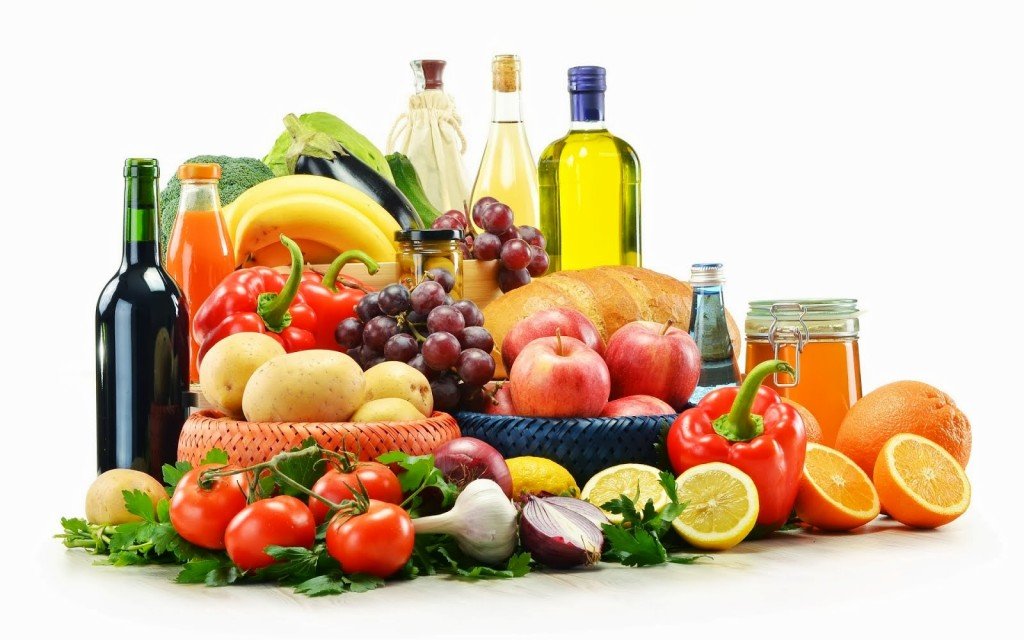“Let food be thy medicine and medicine be thy food” (Hippocrates, Greek physician in 400 BC)
Why do some people don’t take a gram without giving up nothing, while others put on weight just allowing themselves a gluttony?
Merit or blame of metabolism or rather the chemical-physical reactions fed by the calories introduced with the food.
Up to 65% of the daily requirement serves to meet the needs of the heart, lungs, liver and brain, and is the basic metabolism.
Many factors, genetic, hormonal and environmental affect the engine of your body… like the fuel consumption of a car that varies in gear and the slope of the road.
For example, the basic metabolism is faster in the men than in women, slows down with age and varies with lifestyle. Here are some rules to increase or maintain your metabolism efficiently.
1. Eat five times a day (breakfast – snack – lunch – break – dinner). It’s scientifically proven that at equal calories, dividing the daily ration into more meals favors metabolism.
2. Having a copious breakfast. Those who don’t have this habit give the body a warning of food shortage, urging to slow down its functions to save energy and store as many calories as possible. Atavic mechanism of survival during periods of famine but really counterproductive when food abounds.
3. Sleeping at least seven hours per night, sleep disturbances cause alterations at the level of neuro-hormonal circuits that regulate the sense of satiety.
4. Make muscles and move. Choose what you want, three to four times a week: swimming, biking, fast walking are the best activities. Do exercise on alternate days, after physical activity, your metabolism continues to accelerate for few hours, so you consume faster what you eat.
5. Prefer foods that give a “sprint”, such as whole grains, fruits, vegetables, fish and legumes.
6. Another important thing is in the different cooking…
Choose quality products, keep in mind the seasonality and freshness, preserve the food in the right way: basic premises for healthy cooking, but which will fade away if the foods aren’t “treated” well between the stoves, compromising both taste that healthiness of food.
Better fresh
- Bell pepper contains up to 3 times more vitamin C than oranges and mandarins. But the cooking destroys it up to 70%, it’s better fresh with a little bit of extra virgin olive oil.
- Celery is very rich in potassium which helps in regulating blood pressure and prevents muscle fatigue. Raw will satiate you more.
- Banana, a mix of fiber and mineral salts, ideal for snack before sports.
Better Cooked
- Carrots better steamed and seasoned with extra virgin olive oil. Increases absorption of beta carotene that improves iron absorption and makes your skin smoother.
- Tomatoes, if they “seared” you take more lycopene, essential antioxidant for health, well even au gratin.
- Broccoli have so much vitamin C that even if they are cooked, it always stays enough. Try them steamed with balsamic vinegar.
- Onions give antioxidant quercetin with detoxifying properties.
And be careful with the colors… The food we bring to our table has some colors. We talk about fruits and vegetables, which have beneficial nutrients for the body, and which are “colorful” foods. I’m not talking about artificially colored ones, but about those natural colors, such as green vegetables, red, orange, purple fruit and vegetables. Each color represent the value of the compounds present in these foods that are so good for your health, and for this reason we should eat a great variety of them!
So to make practical examples, we talk about substances such as anthocyanins and proantocians, two antioxidants associated with good heart and mind health, and can be found, for example, in blueberries, in eggplants and in blue, purple, and dark red fruits and vegetables.
Studies in the field of nutrition have shown that in order to be healthy we should pay particular attention to three colors: dark green, red and orange! And of each “color” we should try to eat a certain amount each week.
Red and orange vegetables: 5 or 6 servings should be eaten each week.
The foods of these shades of color are red bell peppers, strawberries, carrots, sweet potatoes, pink grapefruit.
Why are they important? Red foods such as tomatoes, red bell peppers contain lycopene, a phytochemical that can also help protect you from the risk of incidence of certain cancers of the prostate and breast.
Alpha and beta carotene are substances that color carrots and sweet potatoes of orange tones. Our body converts these compounds into vitamin A, which helps to keep our eyes healthy (the view), the bones and the immune system healthy. Phytochemicals also act as antioxidants, keeping away those diseases caused by free radicals. Dark green vegetables: 1 portion and half or 2 per week. We talk about cooked and raw vegetables, broccoli, cauliflower’s and turnip’s florets.
Why are they important? Vegetables such as spinach, chard and rocket are good sources of lutein and zeaxanthin, phytochemical substances that help prevent macular degeneration, one of the major causes of blindness in older people. These vegetables are also rich in beta carotene.
The dark green brassicas vegetables, like cabbage and broccoli, provide compounds known as isothiocyanates, which help prevent some serious diseases such as cancer, because among other things they act by amplifying the production of enzymes that eliminate harmful toxins from the body.
Keep an eye on your meals and the colors of your dishes!
Dr. Emma Balsimelli
Emma Balsimelli graduated in Biotechnology at Diagnostic Medical Address at the University of Florence
emma.balsimelli@gmail.com
https://www.facebook.com/emma.balsimelli
